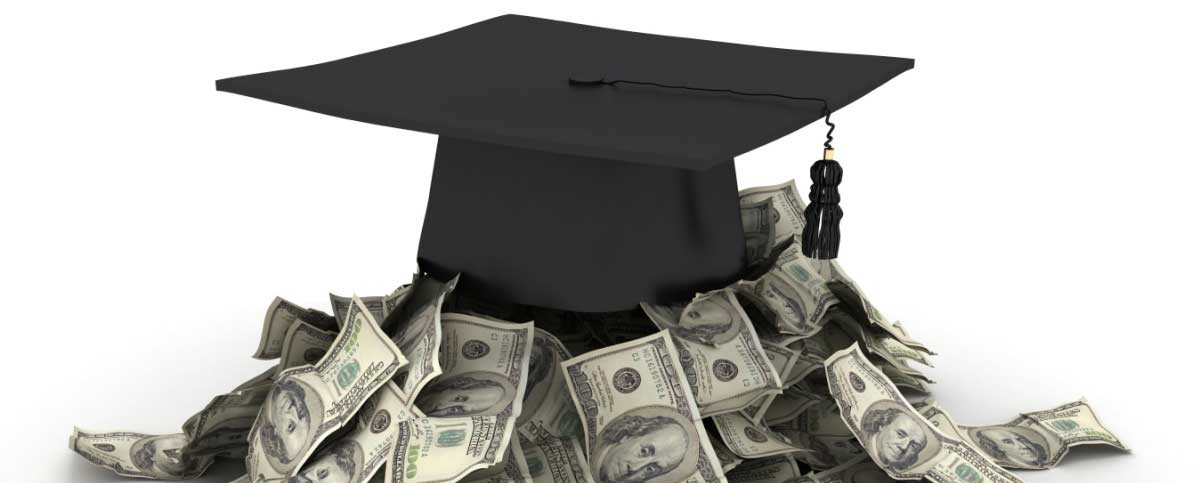Kelli Space managed to rack up $200,000 in student loans.
Last week, Gawker published a short piece entitled “What $200,000 in Student Debt Looks Like,” a story that featured a 23-year-old who racked up $200,000 in student loans at Northeastern University (yes, that Northeastern University). She blames the astronomical debt on an undergraduate degree on summer classes, books and miscellaneous expenses, and a year spent studying abroad. Ugh.
Now, I have a ridiculous number of students loans. It’s frustrating, but expected–four years of undergrad and six years of graduate school will do that to a person, and it’s hard to complain because I’m doing what I love. But the entire student loan situation for me is kind of like the Bush v. Gore Supreme Court case–every time I think about it, I get frustrated.
Articles like this aren’t helping. It’s like that annoying acquaintance you have who happens to have the same political ideology as you but they’re so painfully ignorant that they actually hurt your cause. Pieces like this give people a chance to gawk at the irresponsible student without examining the larger issue: We have a serious problem with student debt, and it’s getting worse. Stow your Horatio Alger ideas about student loan debt for a minute and listen.
The average student has about $25,000 in student loans, which doesn’t really sound like that much to the average student, especially not when compared with the aforementioned $200,000. But actually, that’s quite a bit. According to this student loan calculator, that comes out to a hearty $264 a month payment. Now granted, that’s for a ten-year repayment plan. Obviously, you could change your payment plan, though that would result with you paying a lot more in interest.
More importantly, that is $264 a month that is not. going. anywhere. Short of moving to another country or dying, there is no escaping your student loan payments. Hell, you can declare bankruptcy and unless you are “physically unable to work,” you still have to pay back your student loans. Oh, and before you jump to the next paragraph, you might want to click on that Sallie Mae link to see some of the most ridiculous spin ever; most notably, “Several laws were passed in the 1990s to protect taxpayers from the high number of student loans (estimated at one-fifth) in default or included in a bankruptcy.” Yeah, right. I’m sure those laws were passed to protect taxpayers. Thank you, lawmakers!
Anyway, let’s say that you scoff at my claims, pointing out that over a longer repayment plan, the payments won’t be nearly as much. Well, genius, that really doesn’t matter too much. Because you’ll be paying more in interest (about seventeen thousand dollars more, actually), your loan payments will be $207 a month for a 20 year payment plan instead of $264 a month for the ten-year payment plan. That’s right–you’ll pay almost as much as the loan itself in interest before your loan is paid off. Chew on that for a minute.
And while you’re gnawing, you should also note this: Student loans have increased dramatically over the past decade. Pew research found that undergraduate students who received their degrees in 2008 “borrowed 50% more than their counterparts who graduated in 1996” (adjusted for inflation). Spoiler alert: That’s not dropping anytime soon, as tuition rates generally increase at about twice the general inflation rate. Tuition and fees increase everywhere, just pick a school. How are those increases going to be met? Are baristas at Starbucks going to be given more hours? Are customers at Applebees going to tip their servers better? Is McDonalds going to bump minimum wage? Doubtful. Students will just borrow a few thousand dollars more, and the increases will continue.
When President Obama wanted to help jump-start the economy, he directed a lot of help to homeowners, both current and future. The government helped with foreclosures, passed legislation to help homeowners, and even an $8000 tax credit to potential homeowners. Hey, that’s terrific, but if politicians really wanted to jumpstart the economy, they would target some of that help on those saddled with student loan debt. Ready for this plan, politicians looking to garner votes? How about this: Extend the grace period of the loans by four years (interest-free). How about it, economy? Sure, some frugal graduates would sock away their earnings and pay off a huge chunk of their loans when the four years are up. But for the majority who are working at lower-paying jobs or just enjoying youth, that’s millions of twenty-somethings dropping an extra $250 apiece each month. Sadly, the focus was on the homeowners (probably because they vote).
Speaking of homes, I recently read this fascinating piece in Rolling Stone about a court in Florida was insanely efficient at foreclosures, mostly because they were skirting the law to do so. Journalist Matt Taibbi had a wonderful section that sums up my views perfectly:
“At worst, these ordinary homeowners were stupid or uninformed — while the banks that lent them the money are guilty of committing a baldfaced crime on a grand scale.”
Here, the explicit crime doesn’t exist, but that doesn’t mean it’s right (as demonstrated in this brilliant and telling graphic). Many jobs in the United States now require a college degree, and with college tuition increasing so drastically (and so consistently), the younger generations don’t have much of a choice. There is only one option: Borrow now and pray you can pay it back later.





